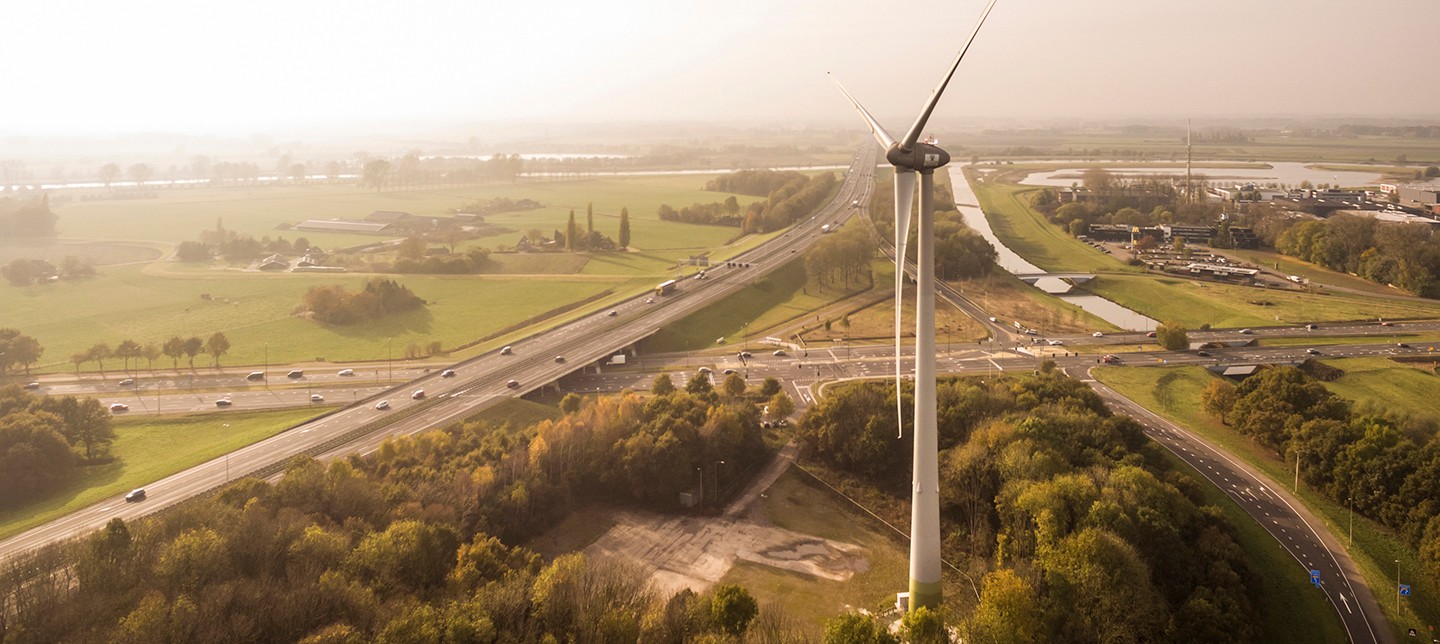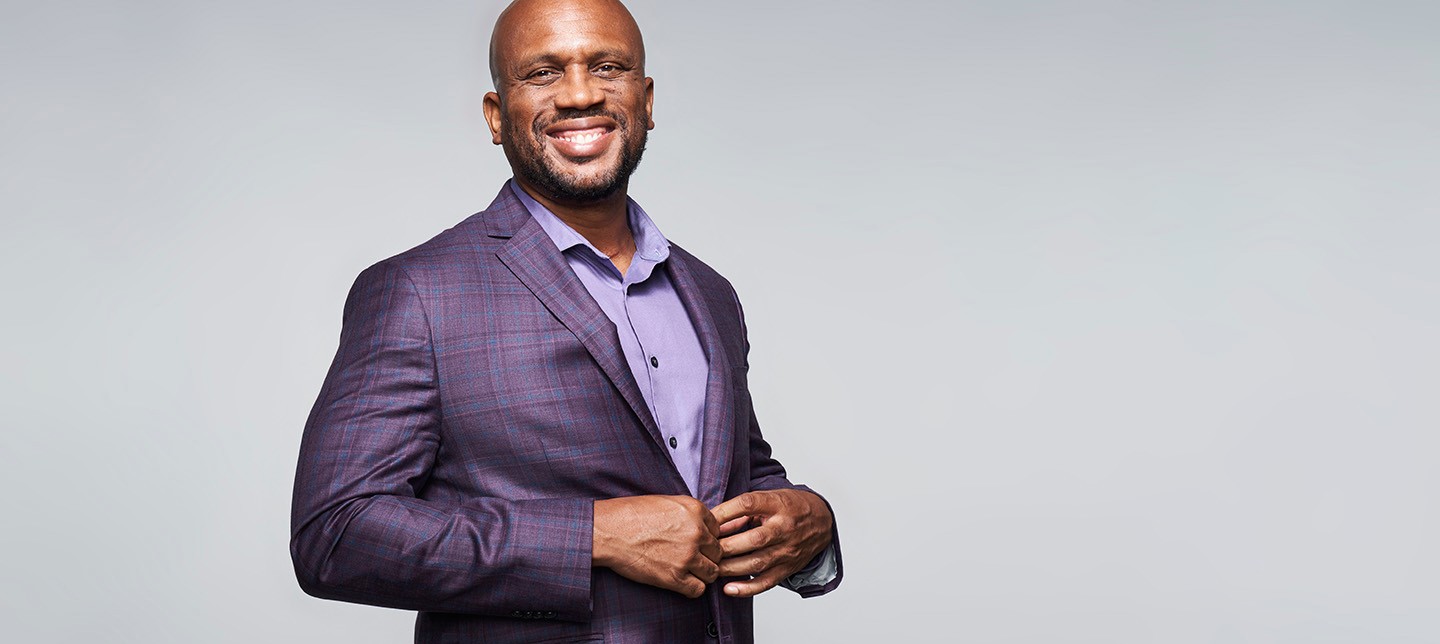
Climate Change Beckons Innovation
Test engineering plays a critical role in rapidly deploying new energy technologies to meet climate ambitions.

Dr. Kazique Prince joined NI in early 2021 as our global director of diversity, equity, inclusion, and belonging (DEIB). He brings over 25 years of experience in helping leaders transform their DEIB work into innovation. And he’s leading the charge toward NI’s 2030 Corporate Impact goals to cultivate inclusion and significantly increase the diversity of our workforce and our leadership.
As we celebrate the legacy of Dr. Martin Luther King Jr. and look toward the new year, we asked Kazique to share his perspectives on how DEIB drives innovation.
One of the things about being a counselor is you hear people’s stories and narratives. You hear the deep sense of pain, sorrow, frustration, and anger that people experience when they feel isolated. For example, I listened to women talking about being mistreated by men and people of color talking about feeling invisible and not feeling heard. It broke my heart.
Giving people a space to be heard is important, but for me it wasn’t enough to sit and listen. I wanted to be part of the solution—to be directly involved with creating meaningful change by changing policies and developing programs. Eventually that led me to consulting with organizations whose missions and values were connected to the values of DEIB, and helping them create the bridge between who they say they want to be and what they’re actually doing.
What I’m most passionate about, more than anything, are my daughter, Karimah, who is 23 years old, and my son, Esteban, who is 21. I want them to have a much better quality of life than I did and have the ability to deal with the challenges I didn’t feel well prepared for. The great thing about watching them grow is seeing them not just reflecting the values I’ve taught them but also offering me perspectives that I hadn’t thought about. These are gifts I never would have been able to realize on my own, and that’s been really enriching.
My hope for NI, as we go about this journey together, is that we experience some benefits that none of us predicted, because man, we’re going to be really happy when we do.
What you see with each of the letters of the DEIB acronym is a kind of historical evolution. Initially, when organizations started with diversity, it was really an attempt to expand representation of race, gender, or other demographic characteristics. But we realized that our approach wasn’t sufficient. People were showing up to work, only to find themselves in environments that weren’t inclusive, where their voices weren’t being heard. Often times, people weren’t being treated fairly—women and people of color routinely found out they were getting paid less or not receiving the same opportunities for promotions compared to others.
We had to come up with programs and initiatives to help remedy these inequities. Getting people in the room wasn’t enough; we had to do things to actually make the DEI continuum come to fruition. The research is clear that all this DEI work is for naught if it’s not leading toward a sense of belonging where people feel like they can be their authentic selves, bring the best they have to offer to an organization, and fulfill their greatest potential. Belonging is a really strong indicator of higher engagement, performance, and innovation.
When the University of Texas at Austin and the University of Michigan were being sued by people for “reverse” racial discrimination in the early 2000s, one of the things you saw come out of that time was the business case they made for racial and cultural diversity. They found that students were better problem solvers and were able to come up with more innovative ideas when people with different cultural insights and perspectives brought them to the college experience.
This idea translated easily to the business community. The university research made the case that this wasn’t just the right thing to do but that science supported the DEIB work we were doing to make better businesses, tap into new markets, and make money in new ways. When people are well connected, have a deeper understanding of each other culturally and value each other for who they are, and can bring their whole selves to work, that translates into a better working environment—one where people can develop better products, provide better customer service, or support business initiatives in other ways.
The biggest challenge is that the engineering industry is overwhelmingly male across the globe. And in the United States, women and people of color are significantly underrepresented in engineering. One reason is that white men have had access to engineering education and jobs much longer than people in other demographics. And that has created a sort of self-perpetuating cycle: white men are then more likely to have family members or friends who are engineers, and so they can build on the legacy of their forefathers and tap into their networks for opportunities.
What feels like a natural evolution is actually a process that has left a lot of folks behind. Take my uncle, for example. He probably should have been an engineer, but he dealt with plenty of racism, lived in a rough neighborhood, and had few educational opportunities, which probably influenced his trajectory. He also didn’t know any engineers: His friends and family members, facing the same barriers, worked as sharecroppers, bus drivers, dishwashers, maintenance workers, and backyard mechanics.
What we want to do is tap into the natural genius that exists in every community. We want to seek out young people who didn’t grow up with engineers, and say, “Hey, we want you to be part of our community, and we’ll show you what the industry is all about.” I think if we do that over a period of time and work in partnership with universities, schools, and nonprofits, we can provide people who’ve felt excluded with a brighter future.
I’m really encouraged by the positive work that’s come out of our Leading Inclusion series, which engaged all NI teams around the globe in conversations about psychological safety, belonging, and inclusion. We’ll be building on this series in 2022 with GlobeSmart, a program that will help deepen our understanding of ourselves and other people through a global perspective. I’m also excited that NI site leaders are setting site-specific goals around DEIB and about the work our inclusion resource groups (IRGs) are doing. Last year, we changed them from employee resource groups to IRGs, and we’ll be strengthening them in the ways they’re looking and asking for. We’re also expanding them to be more globally oriented. I want to be clear: There’s much more work to be done, but these are the initiatives that are nearest and dearest to my heart when I look at 2022.
One big misconception I've heard relates to who will and who will not be hired in the future. People have asked, “Are we no longer hiring white people or white men?” In Malaysia, a similar question has circulated: “Are we no longer hiring Chinese people?” I understand people are coming from a genuine place when they ask these questions. I don’t believe they’re being snarky or dismissive; rather, I think they’re genuinely concerned about where they’ll fit in, in this new organization we’re envisioning. “Do I have a place, and is there an agenda to push me out?”
And what I’m here to say is there’s no agenda to push anyone out. We’re going to find that natural genius represented in every community, and that person may not look like someone we’ve traditionally hired. We’re going to go about our process of promotion and hiring and culture cultivation to make sure that all the people in the organization feel welcomed, valued, heard, and seen. We believe that will result in a community that looks very different than it did in the past. Because it’s not just NI that’s heading in that direction—the US and most countries around the world are becoming more and more culturally diverse.
I would tell organizations to approach DEIB as you would a new building. You need to make sure you have enough money and a dedicated team with the expertise to come up with plans. This is not an extra volunteer activity; it’s changing the infrastructure of the organization to create a better business. It’s about building new muscles, new insights, and new kinds of relationships. If we have that mindset about this work, we’ll understand that it’s not a short-term fix but a long-term commitment.
As for individuals, one of the big things I would tell them is to accept that you don’t know everything. Also, take the risk of going into spaces that are unfamiliar. Be curious and aware of how your judgements and possibly even your biases are influencing you. Challenging ourselves to explore who we are and learn about other people is harder than it sounds. But if we go about it well and get others’ advice about how to navigate difficult situations, it will lead to a deeper level of understanding of others and, more importantly, ourselves.